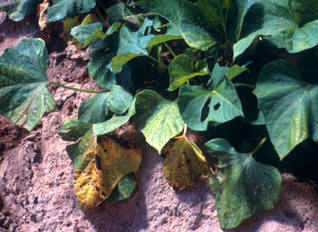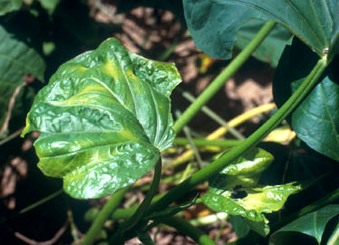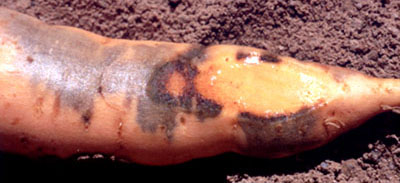|

Mottled or patchy yellowing, necrotic spots and droopiness of mature
leaves.

Deformities, puckering and holes in young leaves.

Blackening of root cortical tissue just under the skin.
|
Diagnostic summary
(any
one of the following is indicative; rarely all are present)
-
stunted growth.
-
mottled interveinal
chlorosis and drooping of mature
leaves.
- small
necrotic spots on mid and older leaves,
followed by yellowing of the area around the spots, then spreading necrosis.
- young
leaves may show various deformities including puckering,
missing sections of blade and irregular holes.
- the
upper surface of young unexpanded leaves may have a silvery appearance.
-
storage roots with patches of brown or black in the subsurface layer, at
harvest or after a short period of storage.
- Occurs in calcareous (alkaline) soils, acidic sandy soils, organic
(peaty) soils.
|
Characteristics
and occurrence
Symptoms
Confusion
with other symptoms
Diagnostic
tests
Management
References
View
full fact sheet
|

